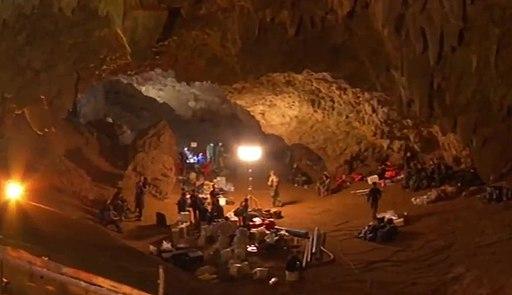With the story of the elaborate rescue operation of the soccer team trapped in the Thai Cave captivating the world, reporters have just revealed a new detail that many find surprising. Initially, there were mistaken accounts of “tranquilizers” being given to calm the boys since many couldn’t swim, let alone dive - a scary ordeal for many first time divers even under ideal conditions. As per CBSN, the Thai Prime Minister denied the use of any “tranquilizers,” but revealed anti-anxiety meds were used.
Why does the distinction matter?
Tranquilizers are substantially sedating medications, ones that can significantly suppress breathing. (1) Obviously, this could pose more of a risk of drowning and challenge a person under low oxygen conditions (which were reported at different times throughout this harrowing tale). Additionally, these drugs can impact the level of awareness and cognition, which during a precarious and protracted escape route could compromise a boy’s ability to follow directions or appropriately respond to commands - imperiling both him and his Navy SEAL leaders. Also, if there are concerns of lung infections, then judicious use would be especially vital given the risks attached. For example, beta blockers can be used for anxiety by slowing the heart rate (typically in stage fright, phobic flyers), not the breathing per se. A benzodiazepine can be tricky, but effective when administered appropriately and in the short-term - at lower doses it can quell nerves, but higher ones can impede consciousness (which is more likely when mixed with alcohol or other drugs, for instance). It is all a delicate dance and the unique circumstances dictated the prescription. It is likely the boys were given a test dose before the big rescue day to see how they respond.
The patient matters.
Adults and kids can respond very differently to these types of drugs. For example, many parents mistakenly believe that giving a child an antihistamine like Benadryl to ensure a calm flight is a sure bet. After you get over that such a move is unwise as it really is for the parents not the child, the decision is also misguided since young children, especially, can often react with paradoxical excitement, not sedation. Medicating children without first speaking to their pediatrician is a bad idea.
In the medicine naive patient, one that has not been previously exposed to a drug, starting at low doses is crucial as is to observation of the response. Some of these drugs are more mildly sedating when given at a low dose as opposed to high when sedation is more assured. With kids, all medication is based on weight. Here, the boys were supposedly all over age 12 which means they were more likely than less to react like adults with these substances. However, they were under extreme stress, having lost weight with muscle atrophy, in a state of starvation, so their metabolic rates were high. These and many more factors needed to be sussed out in the decision-making, including but not limited to any personal history of chronic disease, other meds being taken while trapped or an individual’s deteriorating clinical status.
The circumstances can’t be understated in terms of significance.
In this scenario, an extreme and complex one, innumerable factors needed to be considered to assess the safety of giving an anti-anxiety medication, by weighing the risks and benefits of not giving one. Apparently, in these types of complicated rescue operations, panic can overcome a novice and even a seasoned diver. The rapid speed necessary to recover and compensate for the fear can place all involved in grave danger. Fatality from panic is not an unreasonable outcome here. Avoiding panic is a far safer tactic which is why a medicine was given.
In the end
It is unfair to compare the use of any therapeutic intervention from afar to the optimally informed lens of those on the scene. Risks change when imminent life or death are your alternatives. This is why it is supremely fortunate we live in a time of great scientific and medical advance which was the team and their coach’s best shot at survival. Thankfully, they are all out of immediate danger and now on their path toward recovery in the hospital.
Note(s):
(1) The term "tranquilizers" is not typically used today in the United States in the medical realm. But, this seems to be a familiar term in the public sphere and possibly elsewhere in the world.




